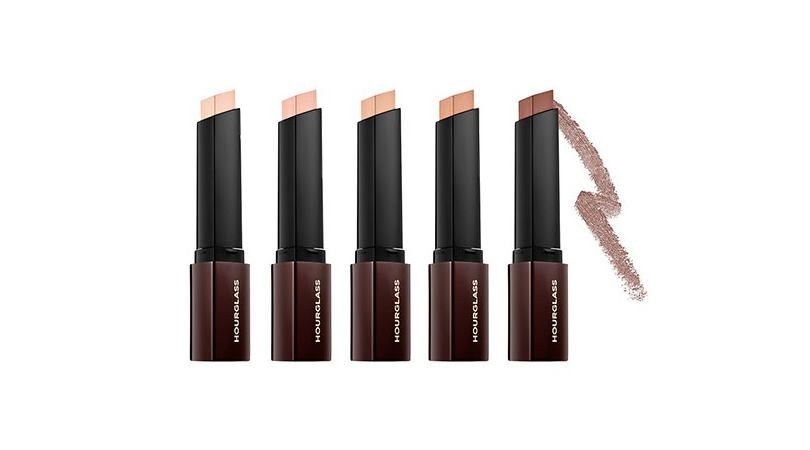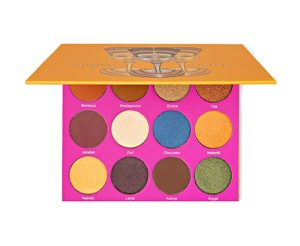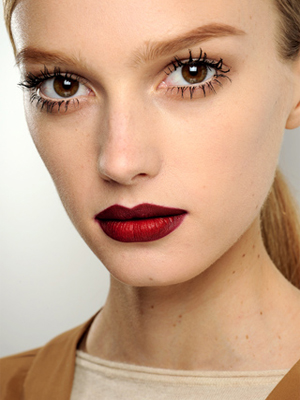In the beauty world, while strides have been made, women of colour often feel left behind. Just ask any beauty enthusiast with dark skin if they’ve ever been told to mix foundations to “create” their skin tone, and I’ll be genuinely shocked if they say it’s happened less than twice. Today’s makeup arena is admittedly more diverse than anything pre-Y2K, but chocolate-, coffee- and deep-skinned beauties are always left behind in ways that pale-to-light-beige complexions seldom are, and it’s not always about the right shade of foundation. Here are some obstacles we folks of colour often face, with tips on how to overcome them.
 People feel invisible when they aren’t considered or afforded the same options as others: a lack of shade ranges is often a way people of colour recognize that their needs are absolutely not about to be met by a brand they’re considering. This is when the saleslady usually says something like, “if you mixed these two shades, you could maybe find yours.” No offense to someone just trying to do their job, but you should never have to buy any colours which you are then required to remaster on your own time. So stick to brands that see you and can cater to your particular shade of olive, brown or deep brown, because our options are not as limited as you’d think, either.
People feel invisible when they aren’t considered or afforded the same options as others: a lack of shade ranges is often a way people of colour recognize that their needs are absolutely not about to be met by a brand they’re considering. This is when the saleslady usually says something like, “if you mixed these two shades, you could maybe find yours.” No offense to someone just trying to do their job, but you should never have to buy any colours which you are then required to remaster on your own time. So stick to brands that see you and can cater to your particular shade of olive, brown or deep brown, because our options are not as limited as you’d think, either.
At the drugstore, anything from the LA Girl, IMAN or Black Opal lines will do you right; at Sephora, STELLAR, Make Up For Ever and–surprisingly–Lancé´me have you covered. Heritage makeup brands Bobbi Brown and MAC will also always get the job done, but if you’re looking for a brand new product to genuinely change your base routine then you absolutely have to try Hourglass’s Vanish Seamless Finish Foundation Stick ($56). The stick is silky and it blends wonderfully, but the best part of this product is that while the rest of Hourglass’s offerings are often lacking for deeper skin tones, this foundation stick comes in 26 colours for an effortless colour-match.
Ashy products are another big problem for women of colour: often, the tone of olive or brown seems right in the bottle, but when applied, the colour lacks dimension and warmth. If your own skin tone is warm, wearing ashy foundation (which is cool in tone) can make your face look sickly and mismatched compared to the tone of the rest of your body. The best thing to do with ashy products and powders is to leave them behind completely. But if we’re being honest, I get it–sometimes, even when the colour is too ashy, the formulation of a product can be so right that getting rid of it seems wrong.
If you’re willing to put in the legwork, you’ve got to start training yourself on fixing it: what you need is a yellow shade corrector to mix in, and a quick video from Jackie Aina to walk you through the mixing process. (On a separate note, aunt Jackie is one of the best in the business regarding makeup advice for people of colour.) Yellow shade correctors are best found in stores that deal with stage and film makeup (which can be hard to find), but if you’re committed to something that needs to be brought back to life, give Face Atelier’s Ultra Foundation Pro Shade Adjuster in Blaze ($36) a try.

When it comes to eyeshadow, for the most part, things are less egregious than in the foundation/concealer arena. But far too often, palettes feature too many chalky colours that aren’t saturated enough to stand out against the rich lustre on eyelids of colour. I’m talking about royal blues that turn into dusty navy on olive skin and purples that read grey until the fifth layer; reds turn dusty and the greens turn faded. Meanwhile, lighter shimmers can stand out far too much, and darker foil shades are often very limited in colour selection.
The solution to this is to shop only after doing your research–if the brand is unfamiliar, stick to oranges, chocolates and deep colours that can give you a good starter smokey eye. Otherwise, start picking out the ones that work best for you. Coloured Raine and Makeup Geek create amazing shades that are well-formulated and balanced, while Juvia’s Place formulates products specifically inspired by black culture. Give their Nubian 2 ($20) palette a go if you’re looking for a perfect starter set that gives good colour payoff that holds throughout the day.

Sunscreen can be tricky, even for olive to medium-tan skin tones. Physical sunscreens often leave behind a white cast that can blend in or fade away on paler skin, but when patted into brown skin, this white cast can look blotchy. Sun protection should not come at a cost to your complexion, and the best thing to do here is to either find a completely clear sunscreen or a suitable foundation that includes sunscreen. As far as lightweight, durable coverage goes, one of last year’s breakout hits–Lancé´me’s Teint Idole Ultra Longwear Cushion Foundation SPF 50 ($55)–is still one of my favourite makeup-as-SPF options, but if you’re a purist who wants coverage without pigment, take Aveeno’s Protect+Hydrate Face & Body Sunscreen Lotion SPF 30 ($12) for a spin.










